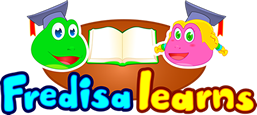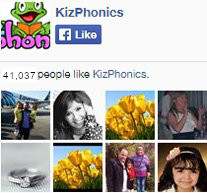Learning Objectives: The goal of these songs is to provide a repetitive way of memorizing the key phonemes of our Kiz Phonics® course. By adding visuals to the song, it makes the task of teaching them much easier. The subtitles make for a great phonics karaoke tool for teachers and parents.
ABC Sound Song
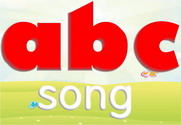
This is the ABC letters of the alphabet song with a spin. This song teaches both the 26 graphemes of the alphabet and 26 sounds.
Man, Cat, Rat Song
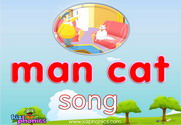
This phonics song helps to review the short vowel 'a' and word families (at, an, ad, ap, ast, atch).
Fox, Dog, Long Song
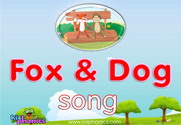
This phonics song helps to teach and review the short vowel 'o' and word families (ox, og).
Bunny & Bug Song
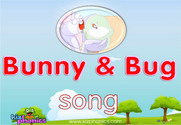
This phonics song helps to teach and practice the short vowel 'u' and word families (ug, unny, uzz).
Mike Rides a Bike Song
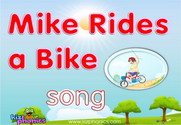
This phonics song helps to teach and practice the long vowel 'i' and the silent 'E' in words like - Mike, rides, kite, bike.
Mouse & Cow Song
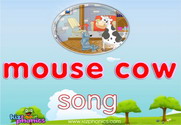
This phonics song helps to teach and practice the double vowel sound (diphthong)/au/ as in mouse and cow.
Ben, Pet, Vet Song

This phonics song helps to teach and review the short vowel 'e' withrelated word families (en, et, ell, elp).
Tim’s Fish Song
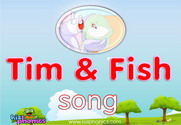
This phonics song helps to teach and review the short vowel 'i' withrelated word families (ish, im).
King Sings Song
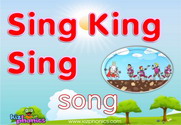
This phonics song helps to teach and review the ending digraph sound 'ng' withrelated word families (ing,ong, ang).
Chickens Chase Fox Song
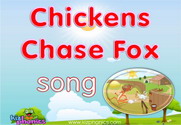
This phonics song helps to teach and practice the consonant digraph sound 'ch' which can be heard in words like chicks, chickens, chase, catch, touch).
Shane the Sheep Song
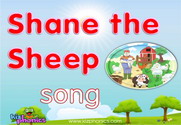
This phonics song helps to teach and practice the consonant digraph sound 'sh' which can be heard in words like sheep, shoe, Shane).
Star in Sky Song
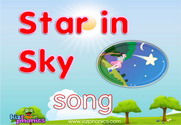
This phonics song primarily helps to teach and practice the S blends 'st' and to a lesser extent 'sk' which can be heard in words like star, sky.
Kate, Snake, Lake Song
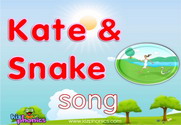
This phonics song helps to teach and practice the long vowel 'a' and the silent 'E' in words like - Kate, snake, lake.
Rain Away Song
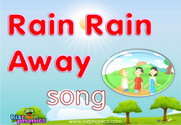
This phonics song helps to teach and practice the vowel digraphs 'ai' and 'ay' in words like - rain, again, day, away.
Peach on Tree Song
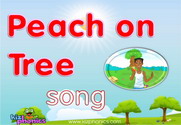
This phonics song helps to teach and practice the vowel digraphs 'ea' and 'ee' in words like - peach, eat, tree, sweet.
Joe Goat & Coat Song
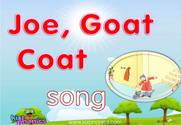
This phonics song helps to teach and practice the vowel digraphs 'oa', 'oe' and 'ow' in words like - coat, goat, Joe, snowy.
Cute Mule Song
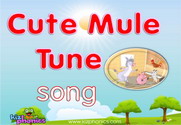
This phonics song helps to teach and practice the long vowel 'u' and the silent 'E' in words like - cute, mule, tune, flute.
Boots on Roof Song
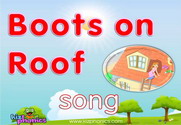
This phonics song helps to teach and practice the long 'oo' vowel digraphin words like - boot, roof.
Good Cook Song
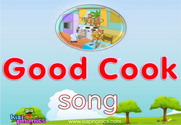
This phonics song helps to teach and practice the short 'oo' in words like - good, cook.
Birds Chirp Song
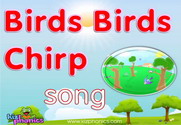
This phonics song helps to teach and practice the r-controlled vowel sound 'ir, er, ur' in words like - bird, burn, verse.
Boy, Oil, Toy Song
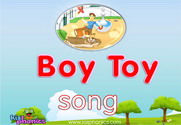
This phonics song helps to teach and practice the double vowel sound (diphthong) 'oy' and 'oi' sound in words liketoy and oil.
Singing Phonics into Life: Using Songs for Teaching Phonics
The Power of Music in Phonics Education
Music and language share many characteristics: rhythm, melody, pitch, and the way they can captivate and transport us. Harnessing the power of music to teach language, specifically phonics, can offer numerous benefits to children. Incorporating songs for phonics learning not only makes the learning process more enjoyable but also reinforces the phonics sounds and patterns in a natural and memorable way. So, let's dive into the world of phonics songs and explore how they can transform the phonics learning experience.
Why Use Phonics Songs for Learning?
Phonics is a method of teaching reading and writing by developing learners' phonemic awareness—the ability to hear, identify, and manipulate phonemes (the smallest units of sound). Phonics songs, which are specially composed to incorporate phonics sounds and patterns, offer a fun and engaging way to reinforce these concepts. Here are some compelling reasons to use phonics songs in your teaching toolkit:
Memory Enhancement: Melodies and rhythms make phonics sounds and patterns more memorable.
Engagement: Children naturally enjoy music and movement, making phonics songs a highly engaging teaching tool.
Multi-Sensory Learning: Phonics songs engage multiple senses—listening, singing, and sometimes even dancing—leading to better retention of concepts.
Discover a plethora of phonics songs tailored for different phonemes at Kiz Phonics Phoneme Songs.
Components of Effective Phonics Songs
Not all songs are created equal, especially when it comes to educational content. Effective phonics songs should include the following components:
Clear Pronunciation: The phonics sounds should be pronounced clearly and accurately to ensure correct learning.
Repetition: Repetition of the phonics sounds and patterns within the song helps reinforce learning.
Engaging Melody: A catchy melody makes the song—and, therefore, the phonics sounds—more memorable.
Visual Aids: Accompanying visual aids, like video animations, can further reinforce the phonics concepts.
Find video songs that incorporate all these elements at Kiz Phonics Song Videos.
How to Use Phonics Alphabet Song in Learning
The phonics alphabet song is a fundamental tool for teaching phonics. Here's how you can use it effectively:
Introduction: Use the phonics alphabet song to introduce new phonics sounds and patterns.
Reinforcement: Regularly play the song to reinforce the sounds and patterns.
Active Participation: Encourage children to sing along and make the phonics sounds themselves.
Visual Reinforcement: Use visual aids, like flashcards or video animations, to reinforce the association between the phonics sounds and the letters or letter combinations that represent them.
Beyond the Basics: Advanced Phonics Sounds
Once children have mastered the basic phonics sounds, you can introduce more advanced phonics concepts using songs. For example, songs that focus on vowel digraphs, consonant blends, or silent letters. Just as with the basic phonics alphabet song, these advanced phonics songs should be used for introduction, reinforcement, and active participation.
Tips for Successful Implementation of Phonics Songs
Select Age-Appropriate Songs: Choose songs that are suitable for the children's age and developmental level.
Incorporate Movement: Encourage children to move, dance, or use hand gestures while singing.
Use Visual Aids: Visual aids like flashcards or video animations can enhance the learning experience.
Repeat, Repeat, Repeat: Repetition is key to learning, so play the songs regularly.
Conclusion
Phonics is a crucial component of language learning, and songs offer a powerful and engaging way to teach phonics sounds and patterns to children. Whether you are a teacher, a parent, or a caregiver, incorporating phonics songs into your educational routine can make a significant impact on a child's phonics learning journey. So, why wait? Explore the world of phonics songs at Kiz Phonics Phoneme Songs and Kiz Phonics Song Videos and let the music play!
Teaching Phonics with songs
One of the most effective ways to teach kids how to read is through phonics songs. These are songs with a melody and music that children love to sing. The repetition of the sounds helps children learn letters more quickly. The song's words contain a variety of sounds for each letter of the alphabet, making it a fun way to teach kids how to read. While it is important to be consistent, you should also vary the length of the song and incorporate different types of animation for each sound.
Another way to help kids learn their letters is through phonics songs. The best phonics songs will help them hear the sound of the letters and recognise them as separate words. A comprehensive Phonics Programme will teach them to recognize words and make them out of the combination of letters. Over time, a child will develop a bank of word sounds and be able to read a full dictionary. This way, they can improve their language skills, while still having fun learning.
Children learn better when they are actively involved in the lesson. In addition to putting the letters and their sounds into words, phonics songs encourage them to follow the flow of a song. Singing with a phonics song helps children develop their reading skills by making the words easy to remember and pronounce. The songs' upbeat melody also creates a lasting effect in a child's mind.
Another effective method for teaching phonics is through a CD that contains recordings of selected readings and phonics songs. These CDs are widely used in K5 materials. They are not only enjoyable to listen to but also teach children how to read. They are a great way to reinforce the phonics lessons you are teaching your children. The CD will help them to learn the sounds of the letters and the words that they are reading.
A phonics song is an excellent way to teach a child the basics of reading. It can help them develop a strong foundation in reading. A phonics song helps kids learn how to read by using a series of repetitions. The song will also help them learn how to spell words in the future. In fact, it's a fun way to teach a child how to read and write.
The songs are also good for your child's mood. They will enjoy singing and will benefit from the repetitive sound of the songs. In addition, children will learn by hearing and writing the letters and words. A phonics song will help them understand the concept of letters and the sounds they hear. When this concept is grasped, a child will be more likely to read words that they have already heard. They will then be able to identify the sounds of the various sounds in words.


